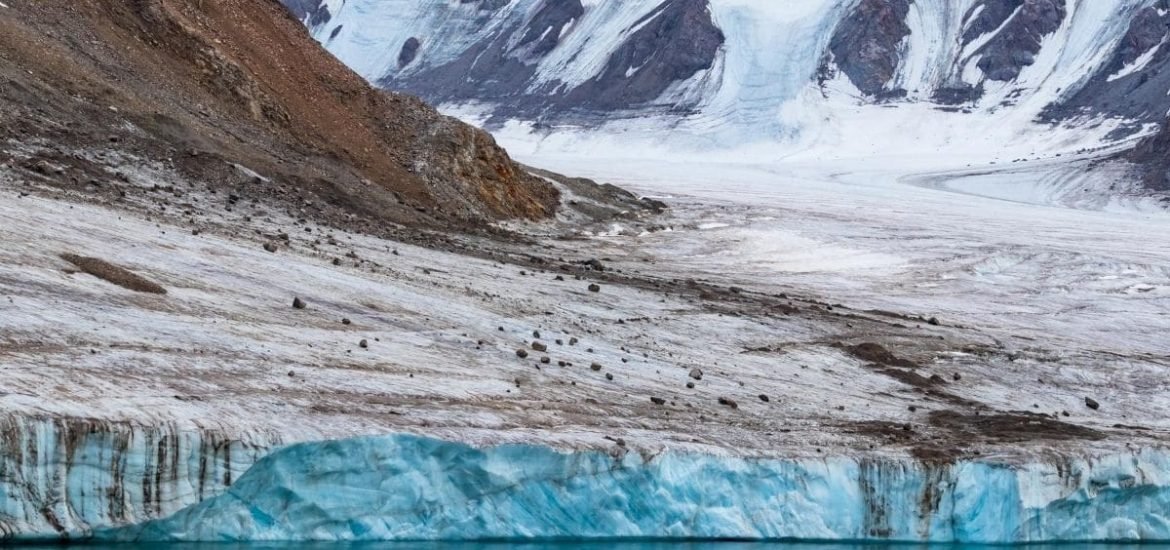
At the end of July, part of Canada’s last fully intact ice shelf began to break off and a mass of ice around 80 square kilometres broke off and began drifting north. Then on August 3, Canadian researchers announced that the enormous ice island had split into two smaller sections, along with numerous smaller icebergs, that are now drifting close to the coastline while being closely monitored by the Canadian Ice Service.
The 4000-year-old Milne ice shelf is located on the northwestern coast of Ellesmere Island in Nunavut and local researchers say there is potential for further destabilization due to pre-existing fractures in the remaining ice shelf.
Ice shelves are thick, floating masses of ice attached to the coastline that block fresh glacial meltwater from flowing into the ocean and act as floating dams, thereby slowing global sea-level rise. Once permanent fixtures in the landscape, polar ice caps are being quickly erased by climate change.
On July 30, NASA imagery revealed that two of Ellesmere Island’s giant ice caps on St Patrick Bay had vanished. This latest report indicates that the area of the Milne ice shelf has now been reduced by more than 40 per cent. At the same time, the Murray and Simmons icecaps, which are also located on Ellesmere, are quickly diminishing and likely to disappear within the next decade.
Higher than normal air temperatures, offshore winds, and open water in front of the ice shelf are all part of the ‘recipe’ for ice shelf breakup, said Dr Adrienne White of the Canadian Ice Service, who discovered the recent event. Indeed, Arctic regions are warming at a much faster rate than the global average – two to three times faster over the last 30 years – through a process known as Arctic amplification.
This year, the Canadian Arctic saw temperatures five degrees higher than the 30-year average, according to Luke Copland, University Research Chair in Glaciology in the Department of Geography at the University of Ottawa. Copland also says there is no question that climate change is driving the drastic ice loss. He says the Milne and other ice shelves in Canada are no longer viable and will disappear in the coming decades.
The researchers had recently discovered a unique ecosystem that may now be lost. “We were amazed to have recently discovered a truly unique ecosystem of bottom-dwelling animals — scallops, sea anemones and so forth — living in the channel,” said Mueller. “Our team was on the cusp of further documenting this unique environment, which may well have disappeared as a result of this collapse”.
The scientists are also still unsure whether this recent calving event has meant the loss of the northern hemisphere’s last known epishelf lake – areas where meltwater runoff from land is trapped in a fiord or bay behind a floating ice shelf, which creates a rare and fascinating ecosystem.
Luckily, scientists studying the area were not on the ice shelf when it collapsed but they did lose their camp and equipment, according to a blogpost on 2 August by researcher Prof Derek Mueller of Carleton University in Ottawa, who has visited the ice shelf 11 times since 2004. Due to the pandemic, the scientists were not in the field when it calved, and the event was only observed through satellite images.